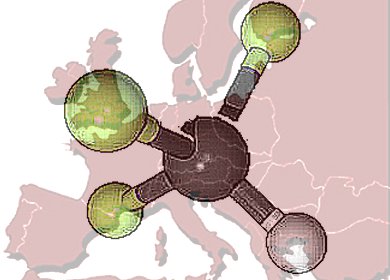Christoph A. Keller and colleagues, Swiss Federal Laboratories for Materials Science and Technology (EMPA), Duebendorf, validated Western European emission inventories of the potent greenhouse gas trifluoromethane (HFC-23) at a country level by combining 2-hourly atmospheric in-situ measurements at Jungfraujoch, Switzerland, and Mace Head, Ireland, with Lagrangian transport simulations. HFC-23 has an atmospheric lifetime of ∼270 yr and a 100-yr global warming potential (GWP) of 14,800 and is unintentionally produced during the manufacture of chlorodifluoromethane (HCFC-22), used as a refrigerant and a precursor in the production of a range of fluorinated compounds, including polytetrafluoroethylene (PTFE; Teflon).
Emissions of 144–216 Mg/yr for July 2008–July 2010 were derived, which are 60–140 % higher than the official emissions gathered from the national reports for the year 2009. The largest discrepancy is found for Italy, where the estimate of 26–56 Mg/yr exceeds the national inventory (2.6 Mg/yr) by more than an order of magnitude.
Under EU rules, chemical companies do not have to destroy HFC-23, but member states of the Kyoto agreement are obliged to report their emissions and have to rely on data from companies.
The research is potentially embarrassing for Belgian chemical company Solvay, which, according to the EMPA, owns the ‘sole HCFC-22 factory west of Milan’, the Solvay Solexis plant, Spinetta Marengo, Italy. Company spokesperson Erik De Leye said to ChemistryWorld Solvay was investigating the difference between estimates from the EMPA group and the reported data and confirmed that the plant has an incinerator dedicated to eliminating HFC-23.
The Environmental Investigation Agency (EIA), UK, says that HFC-23 can be destroyed for just €0.17 (£0.15) per tonne of CO2 equivalent by incineration or with a plasma torch that induces pyrolysis in inert atmospheres with temperatures of up to 20,000°C.
- Evidence for under-reported western European emissions of the potent greenhouse gas HFC-23,
C. A. Keller et al.,
Geophys. Res. Lett. 2011.
DOI: 10.1029/2011GL047976




